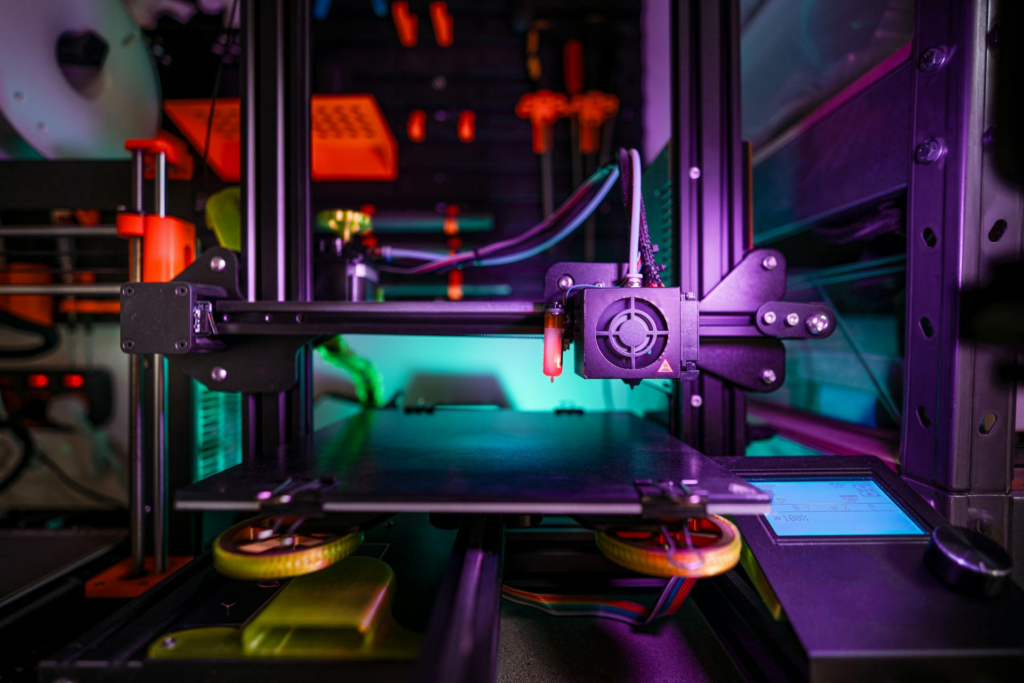Most trends in today’s construction industry are linked to evolving technology. Many projects leverage technology to enhance virtual design and visualization. From the development of smart cities to increased drone use, construction companies are experiencing unique opportunities.
One key area of attention is 3D printing, which is growing significantly. The construction 3D printing market shows an anticipated CAGR of 100.7% through 2030.
Whether companies are using sand, concrete, or geopolymers, advances in 3D printing allow them to save time and money. These companies are experiencing more streamlined prototyping capabilities to reduce waste, improve quality, and speed up the building process — to name a few advantages.
As associated technologies rise in popularity, trends in additive manufacturing will create the need for specialized roles. Here is what to consider moving forward concerning the workforce and associated talent needs.
The Impact of 3D Printing on Construction
The benefits of 3D printing for construction companies are vast, including:
- The ability to complete projects faster and with less waste. These accelerated timelines and the ability to cut material costs will support healthier bottom lines.
- By 3D printing proposed designs, architects can make intricate structures come to life pre-construction. This possibility helps pinpoint issues before the building starts, enhancing durability, safety, etc.
- Another trend is the increased use of green materials to enhance sustainability. When 3D printing a structure, designers can experiment with eco-friendly construction materials to test their strength, weatherproofing capabilities, etc.
Recommended reading: New Construction Technology Releases
3D Printing Technology Will Alter Talent Needs in Construction
In August 2024, the Bureau of Labor Statistics (BLS) released a ten-year projection, reporting a 5.6% increase in construction jobs. This outlook is based on several variables, including adopting modern technologies like Building Information Modeling (BIM) — which uses 3D modeling.
While development opportunities will create jobs across many construction sectors, new roles will be created in response to technological advancements. Here is how 3D printing and other technologies will influence the workforce:
- There will be an increased demand for tech-savvy professionals skilled in 3D printing. Many of these individuals will likely have some engineering or design experience. However, there will also be opportunities for those who have startup tech companies aiming to integrate with larger construction firms.
- Upskilling will be crucial for construction, architecture, and engineering companies, as many traditional workers will need to collaborate concerning advanced technology. Investing in employee development benefits those individuals and the organization.
- Interdisciplinary roles will also be created to blend design, engineering, robotics, etc.
What to Consider as Recruiters and Staffing Companies
Now is the time to start thinking about potential shifts in the industry and how they will influence construction staffing and recruiting. Here are some considerations:
- Be proactive in terms of searching for those who have unique, emerging skill sets. Identify and source candidates with these skills or work with those seeking employment in the industry to seek necessary certifications. There are additive manufacturing certifications available, which most individuals will add to other certifications related to engineering, IT, design, etc.
- Construction clients should be notified about up-and-coming trends in 3D printing and how that will influence the workforce. Clients should understand how 3D printing will be integrated into the industry and the advantages of doing so — as they relate to available talent.
- While this tech-driven shift has already begun, the need to build a talent pipeline for 3D printing in construction will become more apparent in the coming years. Starting this process now will help meet the demand for skilled labor when needed most.
Strategic Recommendations for Employers Moving Forward
If you are in the construction industry and are already dabbling in 3D printing, you know how beneficial it is concerning your precious resources. In this case, you should be considering the skills required to drive this trend in ways that encourage company growth. If you haven’t yet explored the possibilities of 3D printing but want to remain competitive, training and hiring should be prioritized.
Here are some top tips moving forward:
- Invest in training programs to upskill existing workers. Taking action now will help you create a competitive edge.
- To find specialized talent, partner with recruiting firms or staffing agencies.
- Stay informed about industry trends to stay competitive in a rapidly evolving market.
Prepare for the Future of 3D Printing in Construction
There is immense potential for 3D printing in construction. The benefits will impact all involved — employers, employees, recruiters, startups, and anyone connected to this trend.
For those seeking skilled workers, you must ensure your talent management strategy keeps pace with industry innovation. One easy way to do so is to connect with MRINetwork or HireQuest Direct If you want to fill a position, learn more about working with an experienced talent advisor today!

Connect with MRINetwork